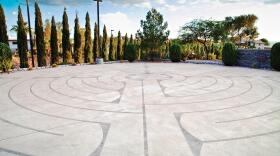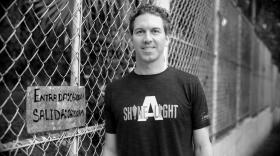[see/hear/do]
Debated breath
Just in time for the presidential debates, UNLV will host a lecture series about presidential debates. Care to respond?
Presidential debates: Are they a highlight of democracy — public sparring that helps us vet our leaders — or just democracy-flavored spectacles of govertainment? This year certainly seems likely to test such distinctions — if the candidates debate at all. (GOP nominee Donald Trump is reportedly iffy about it.) If they do, the final clash of titans is scheduled for October 19 at UNLV. The school will capitalize on that teachable moment with a series of public lectures, beginning September 8, which will explore the meaning(s) of POTUS exchanges.
Given the rock-’em, sock-’em tenor of this campaign, you’ll definitely want to catch the September 20 talk, “Politeness in Presidential Debates,” by Dr. Edward Hinck of Central Michigan University. His talk isn’t based on mere impressions of debate politesse. He’s got real data. Hinck and two colleagues deconstructed presidential debates going back to 1960, sorting their rhetoric according to levels of aggression, recognition of the opponent’s legitimacy and so on, then analyzing it all. One key takeaway: Hinck says the level of aggressive messaging in presidential debates has intensified since 2004, in a way probably not healthy for democracy. “I’ll be presenting a somewhat concerning picture of American discourse,” he says.
Other topics include the positive and negative impacts of social media on debates (September 12); “Why Candidates Fear Presidential Debates” (September 27); and the big question, “Do Presidential Debates Matter?” (October 11). Full schedule at unlv.edu/2016debate/lectures.
[art]
Pokémon go see art
There’s more to the augmented-reality app Pokémon Go than scouring the city hoping to capture a Charmeleon, Bulbasaur or Mascaradactyl (okay, we made up that one, like we did the Pokéfolk on page 94). These creatures gather in public locations called Pokéstops or “gyms”— many of which are pegged to public art. Players “can expect to discover both well-known and hidden pieces of art ...,” blogger Christopher Zheng notes on the website of Americans for the Arts.
Las Vegan Garrick Smillie, 26, served as a Pokémon Go beta tester. “They had me visually identify public artworks,” he says, from sculptures at UNLV to the Neon Museum. Pokémon Go is “intentionally trying to get you to go to pieces of public art,” he adds. “Playing the game, I learned there is a lot more here than I knew about.”
A few mishaps have resulted from the game — the Holocaust Museum in Washington, D.C., had to ask gamers to stop playing in its somber memorial — and some institutions are bemused but accepting. There may be a Pokéstop at the Neon Museum, but you're only encouraged to Poké-hunt in the lobby, lest a distracted millennial bump into the signs.
“I do think it has the potential to bring students to parts of campus they would usually not go to,” says Alisha Kerlin of UNLV’s Barrick Museum, which has gyms and Pokéstops nearby. “That’s great because a few might ‘discover’ the museum that in 2017 will be 50 years old.”










